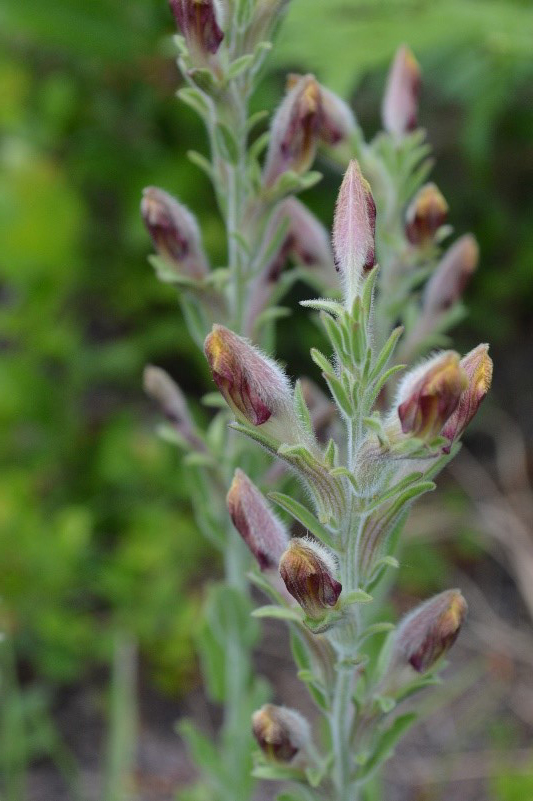The plant is American chaffseed, a flowering perennial herb with highly specialized habitat needs. The species’ last stronghold is in a state forest in the Pinelands of Burlington County.
 |
| American chaffseed (Schwalbea americana) |
The project is being overseen by the DEP’s Office of Natural Lands Management. This year, the total number of American chaffseed flowers at the Burlington County site is double that of recent years, with the number of stems up 65 percent from last year. All of this points to an increase in the overall number of plants next year.
Resembling a snapdragon, American chaffseed needs open meadows with sandy and acidic soil as well as nearby wetlands. Seeds of American chaffseed also require contact with the roots of a host plant to germinate. Known host plants in New Jersey include Maryland golden aster, inkberry and dwarf huckleberry.
The American chaffseed is listed as endangered by the state as well as the federal government. The biggest threats to American chaffseed across its range include development, mowing and suppression of wildfires that are needed to remove competing understory vegetation.
The species was once found at 18 locations in New Jersey, all in or near the Pinelands. At one time, the species was found in 16 states from Massachusetts to Louisiana, and as far west as Kentucky and Tennessee. Today its range has diminished to spotty populations in eight states along the Atlantic and Gulf of Mexico coasts.
No comments:
Post a Comment